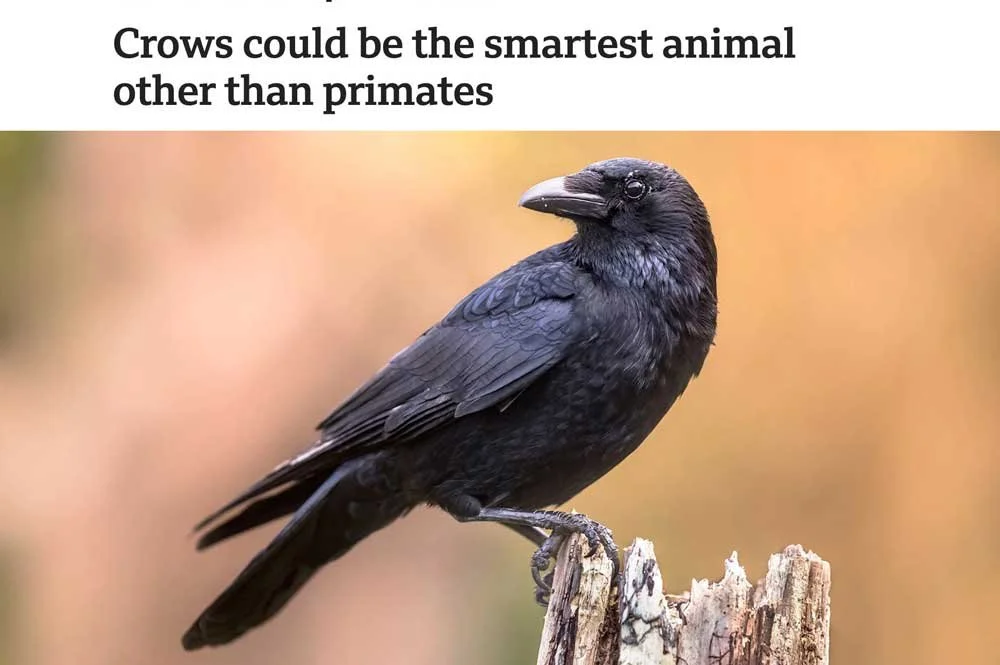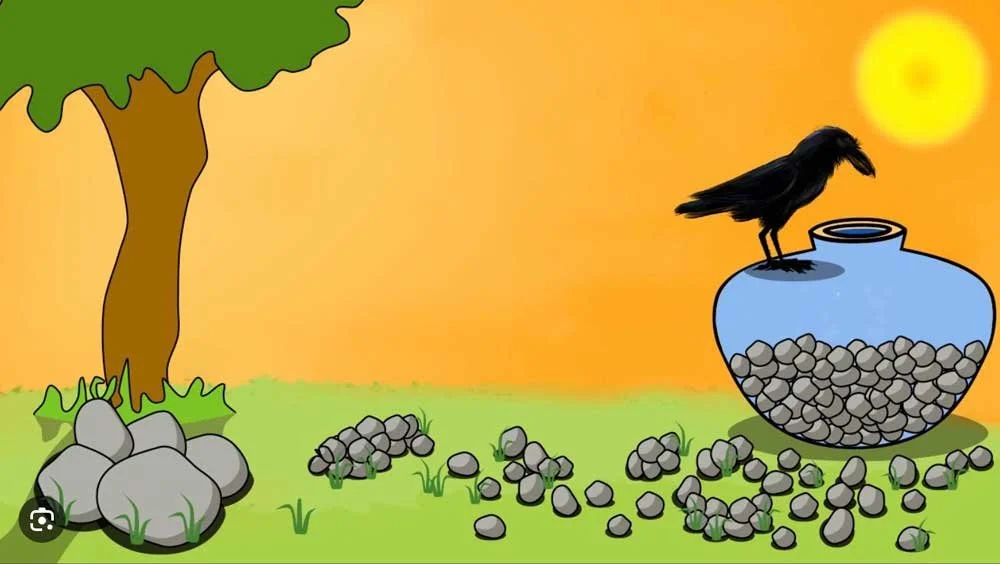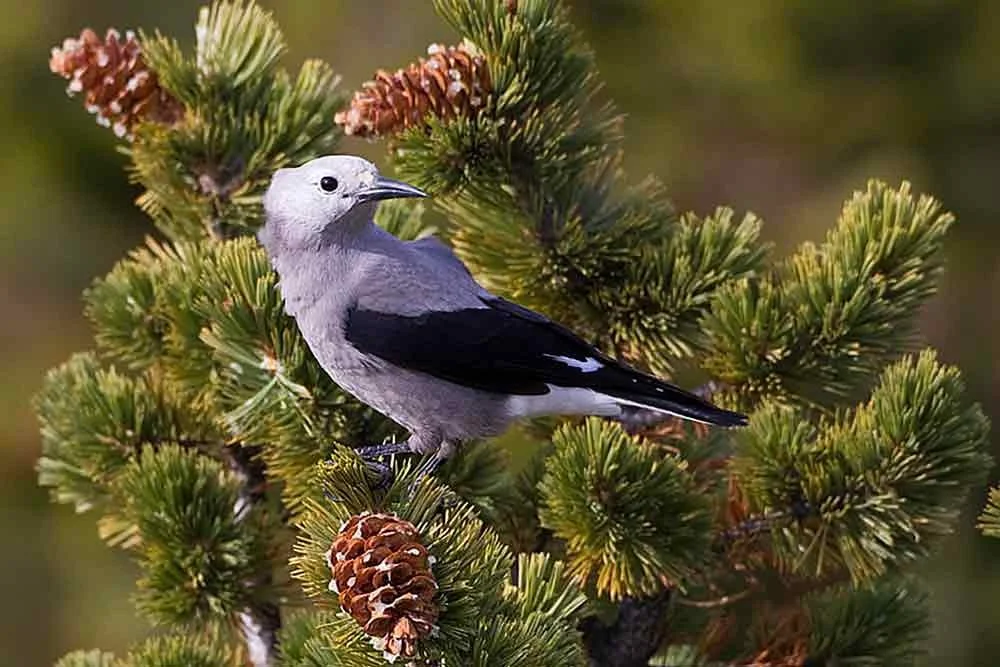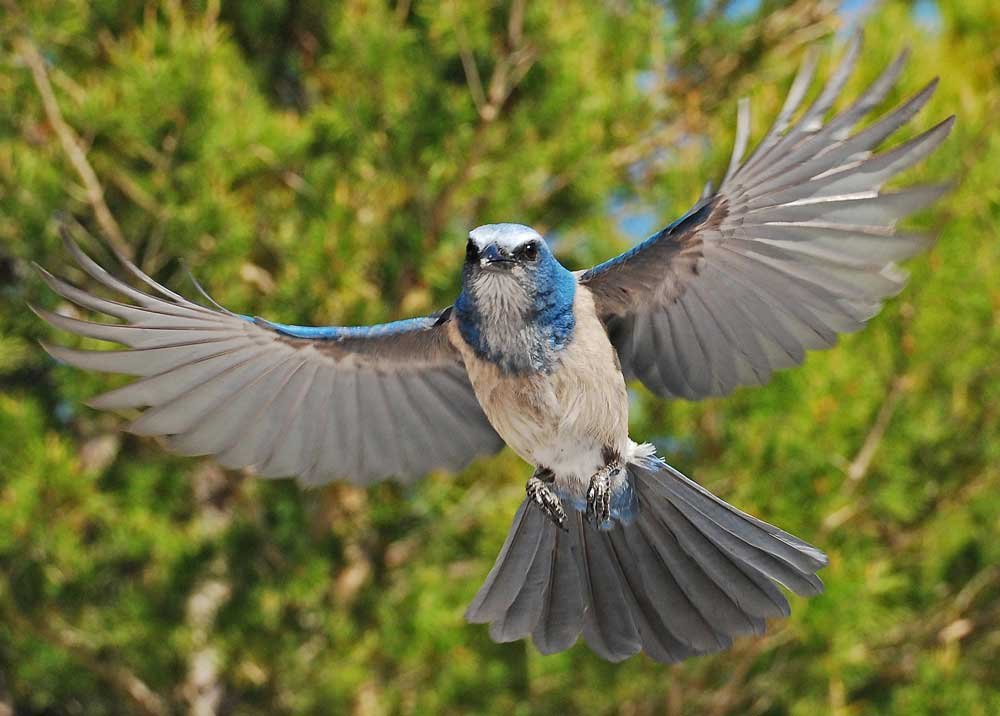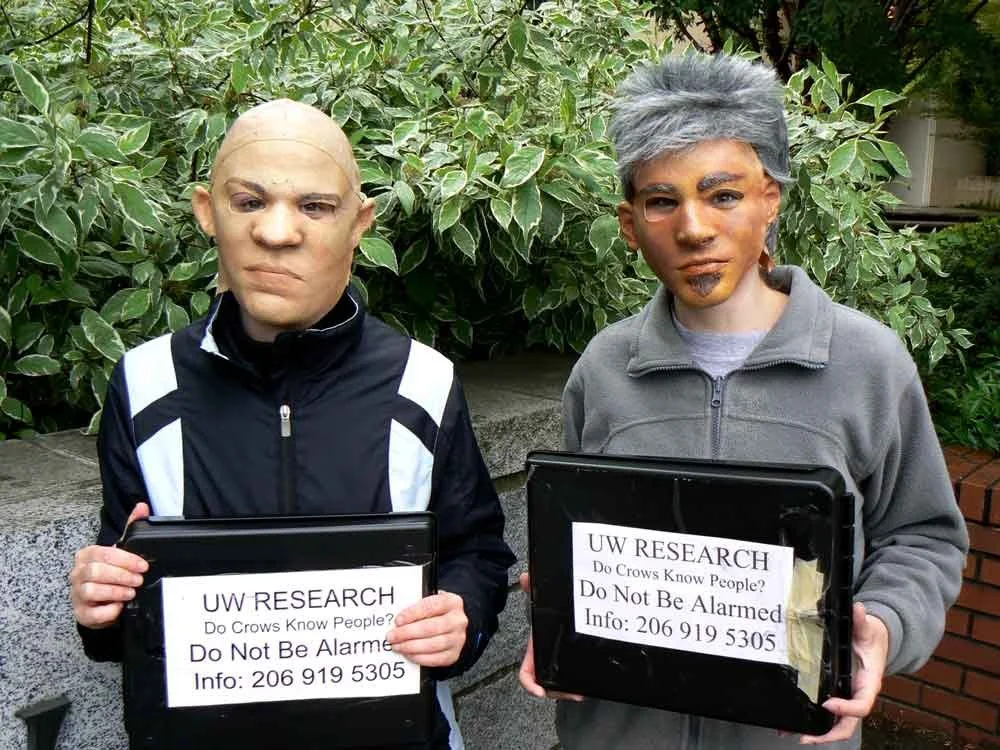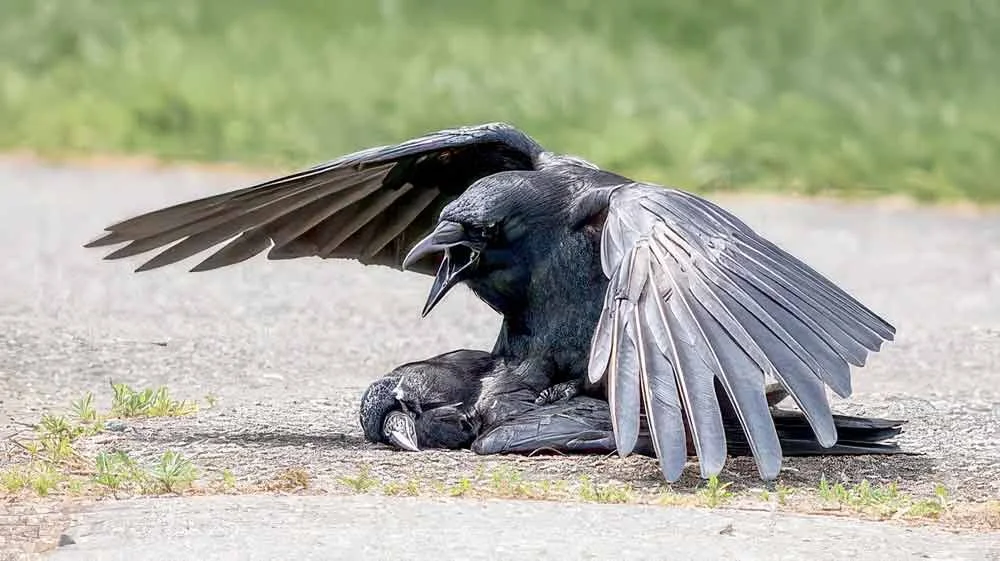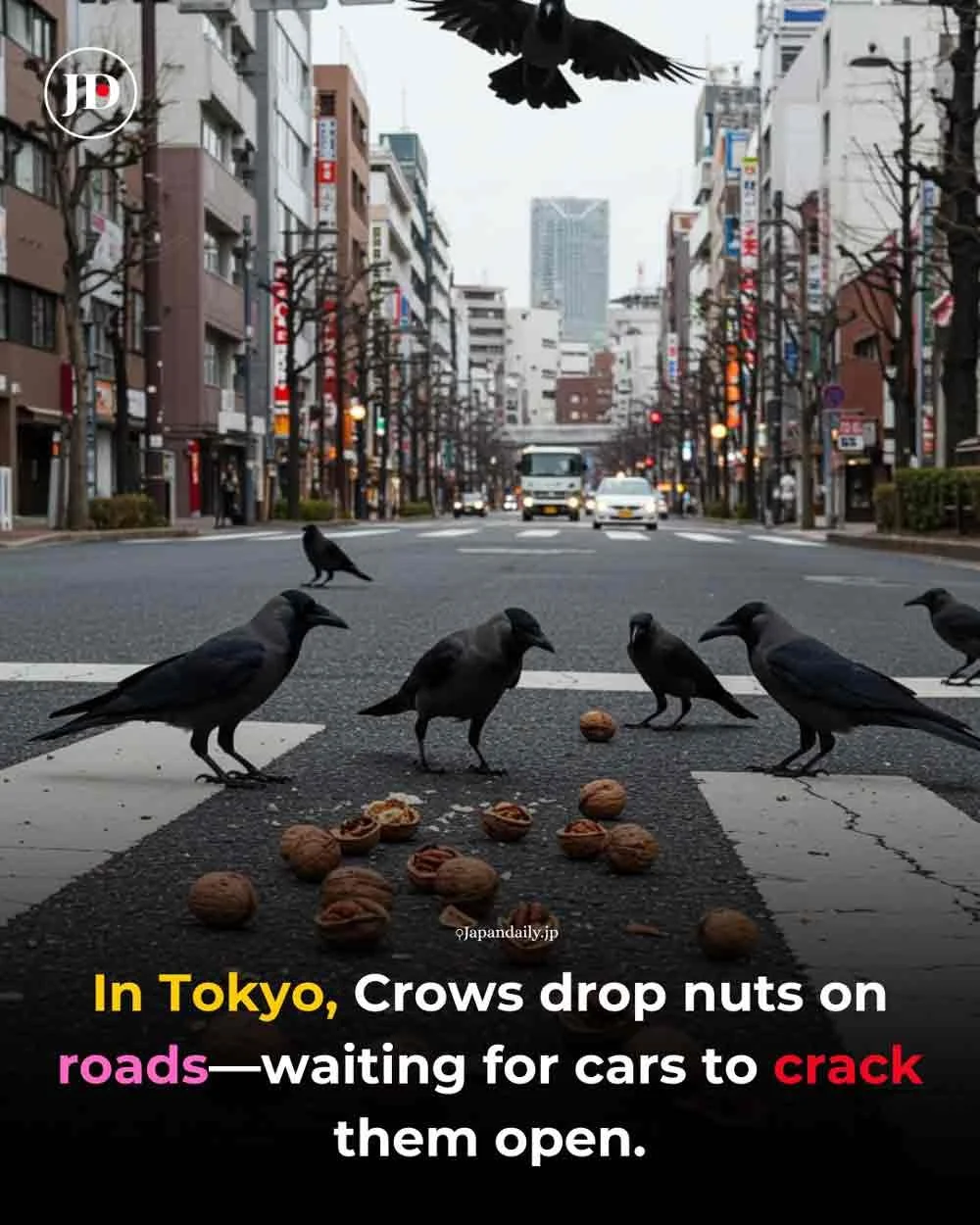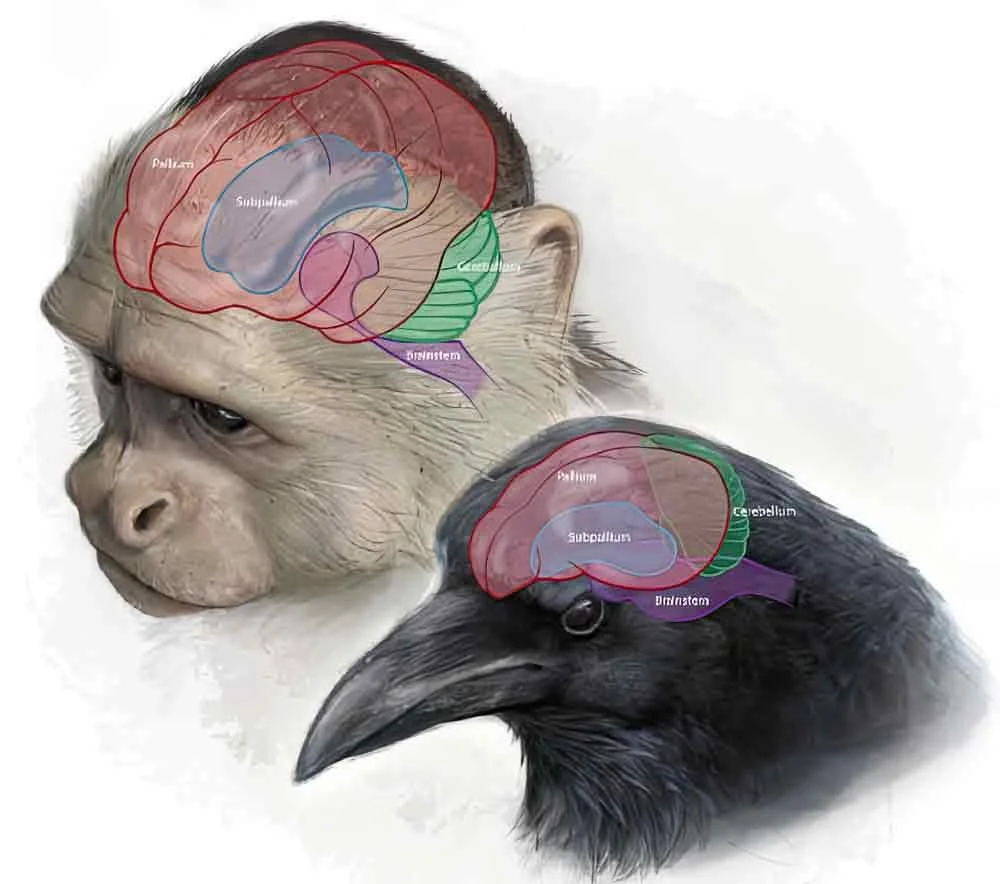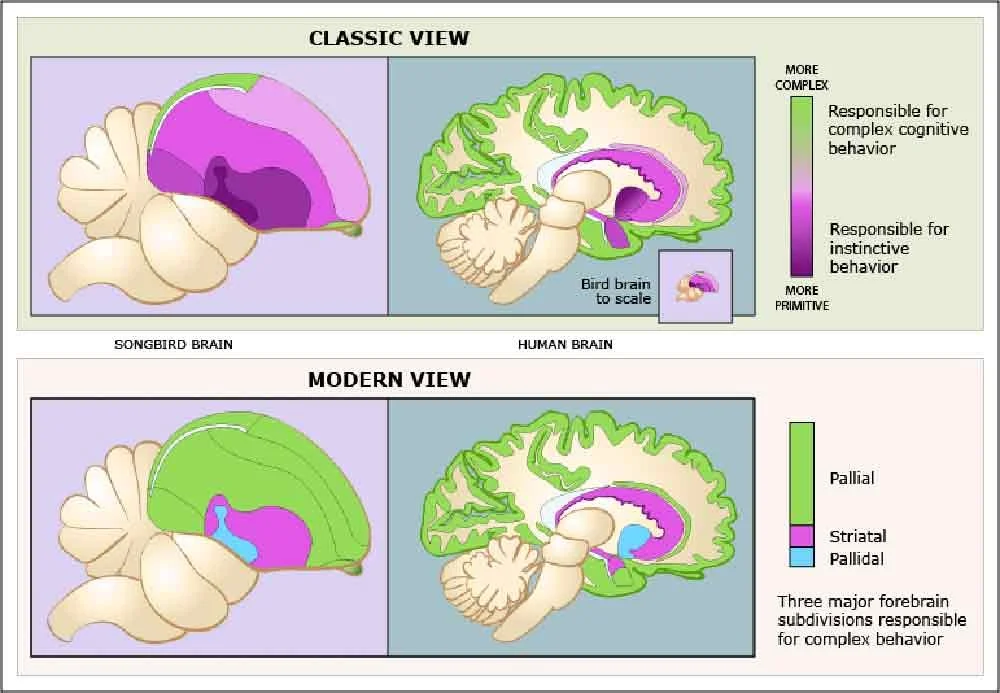HOW SMART ARE CROWS?
How does dropping pebbles into a jar of water raise the level of the water?
Crows are members of the corvid family. Name five other members of the corvid family. (Hint: Look at one of the graphics.)
What do Clark's Nutcrackers do with pine nuts?
Describe what a Clark's Nutcracker looks like. (Hint: Look at the photograph!)
How might Scrub Jays prepare for the future?
How do we know wild crows remember human faces?
How might a crow respond to a dead crow?
What do some Japanese crows do with their nuts?
In winter, what do some juvenile (young) crows do with plastic lids?
A capuchin monkey’s brain is three times bigger than a raven’s brain. Does that mean the capuchin monkey is three times more intelligent?
• Read •
HOW SMART ARE CROWS?
An Old Fable
In one of Aesop’s 2,500-year-old fables, a crow is searching for water. It spies a pitcher and discovers liquid inside — but it’s beyond reach.
Soon, the crow begins dropping pebbles into the pitcher. One by one, they displace the water, and the crow quenches its thirst. Interestingly, this fable turns out to be pretty accurate.
In a 2014 experiment, scientists placed a food reward in a tube partially filled with water and watched as crow after crow dropped stone after stone in until the food was in beak-snatching distance.
Crows in the Real World
This is just one of many fascinating displays of intelligence from corvids — the bold, brainy family of songbirds that includes crows, ravens, jays, and magpies.
This is just one of many fascinating displays of intelligence from corvids — the bold, brainy family of songbirds that includes crows, ravens, jays, and magpies.
Memory and Planning
To start, corvids are strategic when it comes to their food.
They ransack trash bins and snatch bites from under other birds’ beaks. They also hoard and cache their food.
A single Clark's nutcracker, for instance, is thought to scatter some 30,000 pine nuts across more than 2,000 cache sites, which it can recover more than nine months later.
• Clark's nutcracker
And in one experiment, scrub jays given waxworms and peanuts cached and retrieved the perishable worms first and left the peanuts for later.
• Scrub jay
It seemed the jays not only recalled where they buried things, but also what they buried and when.
What’s more, experiments show that scrub jays will bury food when they know it won’t be available the next day, suggesting they can plan for future events too.
MASKED SCIENTISTS
And corvid abilities extend beyond meal prepping.
In one experiment, a masked person trapped and released a wild crow. When the masked person returned, crows dive-bombed them.
If they wore a different mask, however, they were ignored, suggesting that corvids can distinguish between — and remember — different human facial characteristics.
Crows also tend to gather around the bodies of their dead companions and caw — a behavior sometimes likened to a funeral.
And one study showed that crows were slower to return to an area where they had seen a dead companion, suggesting they associated it with risk.
reasoning and tool use
Corvids like New Caledonian crows also demonstrate an impressive proclivity for reasoning and tool use.
Even in the wild, New Caledonian crows fashion sticks into hook-shaped probes for food.
Some Japanese crows have been observed placing nuts on the road, waiting nearby, then retrieving the rewards once passing cars have cracked them open.
Wait, Wait! There’s More!
But corvids also do things that are harder to explain.
They sometimes tote trinkets around, which might help them practice caching or serve as gifts to their partners.
• An 8-year-old Seattle girl has been feeding crows -- and they have been leaving her trinkets as thank you gifts
And they’ve been spotted repeatedly sledding down roofs on plastic lids. Play activities like this are relatively common in corvids, especially juveniles.
Corvids have a longer developmental period than other songbirds, and it’s thought that play encourages learning and lays a strong foundation for their intelligent behavior.
SOCIAL LIVES
Some researchers think cleverness is crucial to the highly social lives of corvids. They breed cooperatively, live and communicate in large dynamic groups, share food, and mob predators together.
Some have lifelong partnerships where they recognize their companions, and track, respond to, and even predict each other’s behaviors and desires.
corvids among the smartest animals
Scientists today consider corvids among the smartest animals — a big step from where consensus used to be.
In the late 1800s, German scientist Ludwig Edinger compared primate and crow brains and interpreted the crow’s brain structure as primitive, dismissing their cognitive abilities. This was a misinterpretation.
A raven, for example, has a brain that looks quite different than a capuchin monkey’s — and is about a third of the size.
But both animals have a similar number of neurons in their pallium, a brain region that’s associated with cognition. So while corvid brains traveled a very different evolutionary path than primate brains, it was still one that brought them sophisticated cognition.
The next time you spot a crow, you can be assured of its smarts. Just maybe don’t give it a bad reason to remember you.
Accurate (adj.) correct or exact; matching the truth or facts
Associated (v./adj.) connected or linked with something
Cache (n.) a hidden storage place for things, especially food or supplies
Cognition (n.) the mental action of thinking, learning, and understanding
Companions (n.) people or animals you spend time with; close friends or partners
Consensus (n.) general agreement among a group of people
Developmental (adj.) relating to growth, learning, or progress over time
Distinguish (v.) to tell the difference between two or more things
Experiment (n.) a scientific test done to discover how something works
Fable (n.) a short story, often with animals, that teaches a lesson or moral
Juveniles (n.) young animals or people who are not yet adults
Perishable (adj.) likely to spoil, decay, or go bad quickly
Primitive (adj.) simple or early in development; not advanced
Proclivity (n.) a natural tendency or habit to do something
Quenches (v.) satisfies thirst by drinking
Retrieve (v.) to get back something that was lost or hidden
Sophisticated (adj.) highly developed or advanced in knowledge, design, or behavior
Strategic (adj.) carefully planned to achieve a goal
Trinkets (n.) small, decorative objects that are not very valuable
► COMPREHENSION QUESTIONS
— please answer with complete sentences
How does dropping pebbles into a jar of water raise the level of the water?
Crows are members of the corvid family. Name five other members of the corvid family. (Hint: Look at one of the graphics.)
What do Clark's Nutcrackers do with pine nuts?
Describe what a Clark's Nutcracker looks like. (Hint: Look at the photograph!)
How might Scrub Jays prepare for the future?
How do we know wild crows remember human faces?
How might a crow respond to a dead crow?
What do some Japanese crows do with their nuts?
In winter, what do some juvenile (young) crows do with plastic lids?
A capuchin monkey’s brain is three times bigger than a raven’s brain. Does that mean the capuchin monkey is three times more intelligent?
► From EITHER/OR ► BOTH/AND
► FROM Right/Wrong ► Creative Combination
THESIS — Argue the case that the bigger the brain, the more intelligent the animal.
ANT-THESIS — Argue the case that brain size and intelligence may not be related, so an animal with a smaller brain does not mean it is less intelligent.
SYN-THESIS — How might both of these perspectives have value?

